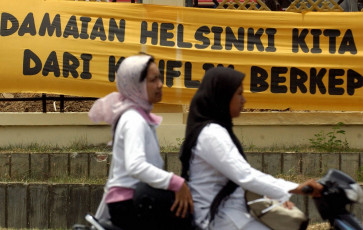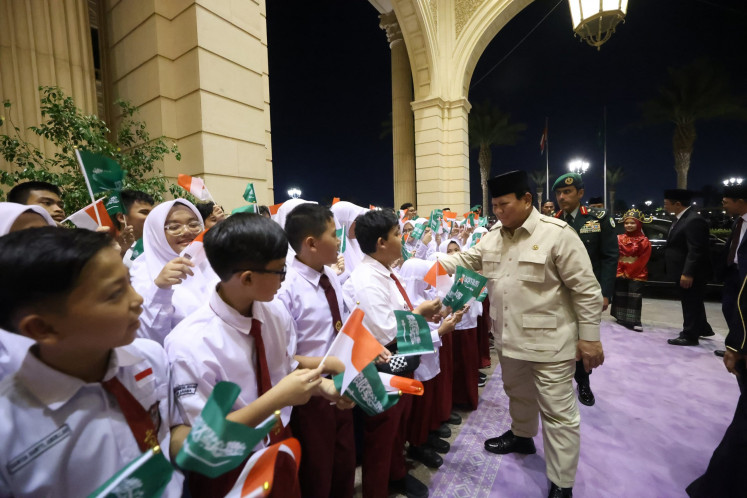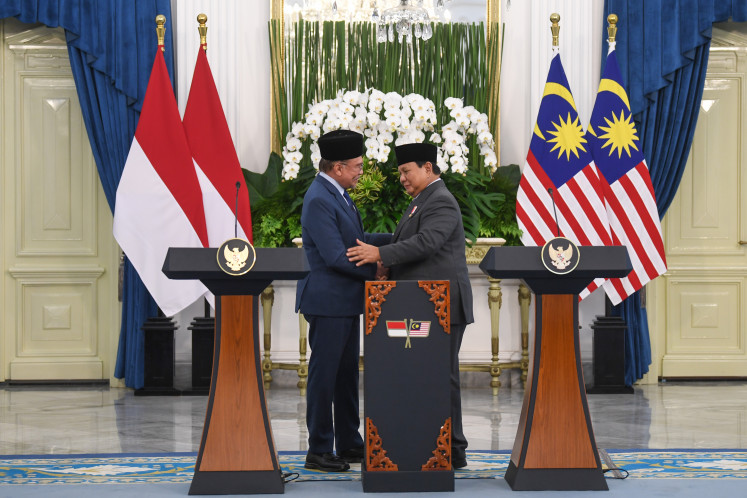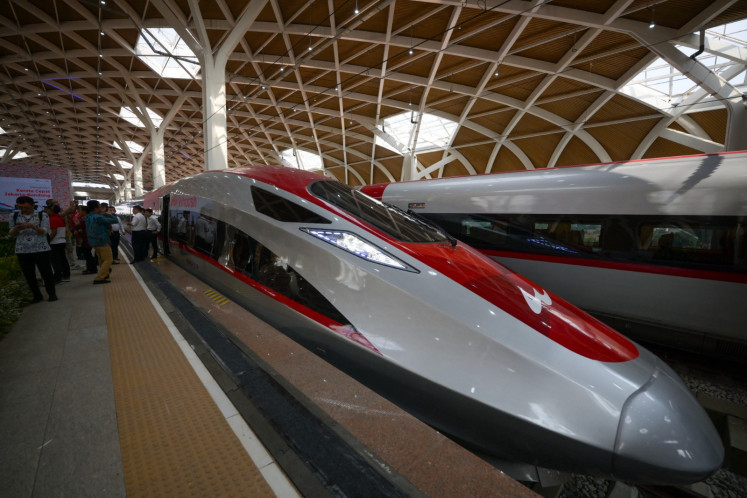Popular Reads
Top Results
Can't find what you're looking for?
View all search resultsPopular Reads
Top Results
Can't find what you're looking for?
View all search resultsAnalysis: Natural rubber demand in danger
Weakening automotive sector performance takes its toll on natural rubber demand because more than 50 percent of natural rubber demand comes from the automotive sector. Car sales in China, the US and Japan from January to May all slumped 22.7 percent yoy, 22.9 percent yoy and 19.2 percent yoy respectively.
Change text size
Gift Premium Articles
to Anyone
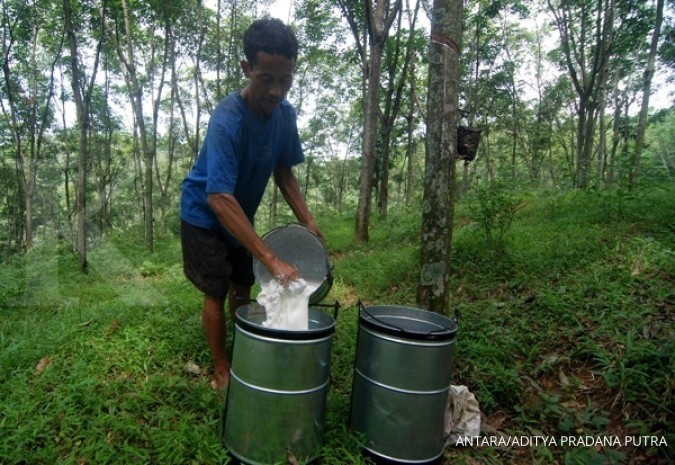
C
OVID-19 is not only a threat to human health but also to the economy, including the natural rubber sector. Global natural rubber import quantity in the period from January to April was recorded at 2 million tons, or declining by 19.7 percent year-on-year (yoy). Natural rubber import quantity from China, as the biggest consumer, weakened by 4.9 percent yoy in the same period. Similarly, natural rubber import quantity from the United States and Japan also dropped 9.2 percent yoy and 13 percent yoy, respectively.
From the producer side, all top four natural rubber producers experienced declining performance. Natural rubber export quantity from Thailand, Malaysia and Vietnam decreased 11.3 percent yoy, 8.3 percent yoy and 54.4 percent yoy respectively from January to April. Similarly, Indonesia’s natural rubber export quantity declined 13.6 percent yoy to only 0.9 million tons in the January to May period.
Furthermore, the Association of Natural Rubber Producing Countries (ANRPC) has revised down its natural rubber supply and demand projection for the fourth time this year. The ANRPC’s natural rubber production forecast is 0.3 million tons lower than their previous forecast, a decline of 4.7 percent to 13.1 million tons in 2020. Additionally, natural rubber demand is expected to fall 6 percent to 12.9 million tons this year. Higher production than demand means that the pressure on the natural rubber price will likely continue in 2020.
Weakening automotive sector performance takes its toll on natural rubber demand because more than 50 percent of natural rubber demand comes from the automotive sector. Car sales in China, the US and Japan from January to May all slumped 22.7 percent yoy, 22.9 percent yoy and 19.2 percent yoy respectively. Based on this, Moody’s projects global car sales will decline 20 percent this year and rise 11.5 percent in 2021 then continue recovering at a slower pace. In addition, Indonesian car sales performance is also affected by the pandemic and already declined 41.2 percent yoy in the period from January to May. Furthermore, the Association of Indonesian Automotive Manufacturers (Gaikindo) sees that domestic car sales will drop 41.7 percent to only 600,000 units this year.
Theoretically, in a time of crisis such as we are in now, people tend to spend their money more on basic physiological needs, especially food. The excess income will rather be spent as savings for uncertain and emergency events. The increasing unemployment rate also impacts people’s purchasing power. Therefore, consumers are less likely to buy cars or other durable goods.
The behavior shift that leads toward more virtual activities will also impact the fundamental demand for vehicles. The increasing trend of working from home and stay-at-home activities is also limiting the need for transportation. Therefore, the gloomy outlook for the automotive industry will likely remain, or at least the industry will never be the same as before COVID-19. Consequently, natural rubber demand will mostly follow the declining automotive trend this year and moderately recover next year.
The declining demand is also reflected in a decreasing natural rubber price. The price of technically specified rubber (TSR) 20 at the Singapore Commodity Exchange on July 3 was US$1.16 per kilogram, a fall of 20.1 percent year to date (ytd). The average price of TSR 20 in the first half of 2020 was $1.22 per kg, lower than the same period last year when it was $1.46 per kg. The natural rubber price will likely continue to be highly volatile throughout 2020, especially following the crude oil price volatility.
Nevertheless, there is still positive news for natural rubber demand. The pandemic increases demand for medical gloves and personal protective equipment. The indicator of growing medical gloves demand is increasing medical gloves import. Global medical gloves import grew 10.6 percent yoy in 1Q20. Medical gloves import volume in the US and China rose 27.1 percent yoy and 57.5 percent yoy respectively in the period from January to April 2020. Even Thailand, one of the biggest medical glove producers, recorded a 7.5 percent yoy increase in imports of the product.
However, the medical gloves market cannot substitute the automotive market. The gloves market only absorbs around 20 percent of the natural rubber compared to the automotive sector, which absorbs more than 50 percent. Hence the demand gap is still huge. This year will be very challenging for Indonesian natural rubber producers. A defensive strategy is the only option for them as expanding demand is very limited. Our forecast for the average TSR price in 2020 is $1.16 per kg. However, the price could fall deeper depending on the severity of the pandemic.
For sure, we believe that in the short term, the natural rubber sector is likely to be in a difficult situation. But what about the long-term view of the natural rubber sector? First of all, we need to see the long-term trend of natural rubber production and demand. The data show that natural rubber production from 2000 to 2019 grew 3.7 percent annually, while consumption only increased 3.3 percent annually. Oversupply put pressure on the natural rubber price recovery and left it at a low price for years. Naturally, if a commodity stays at a low price for a long time, action will be taken to switch to a more profitable business or other commodities. Hence, the overall production will be lower and the condition will turn back to undersupply. Eventually the price will begin to rise. However, in the case of natural rubber, there are plenty of rising star producers that keep the production high, such as Côte d'Ivoire and Vietnam.
The competition phenomenon can also be seen in the export performance of the top producers. Natural rubber export volume from Thailand, Indonesia and Malaysia only grew 1.2 percent, 3.1 percent and -1.4 percent annually from 2000 to 2019. However, natural rubber export volume from Côte d'Ivoire and Vietnam grew 11.2 percent and 5.5 percent in the same period, higher than the top three producers. Côte d'Ivoire and Vietnam have several advantages, such as younger plantations and being closer to the buyers (Europe and China).
So how to improve the natural rubber sector in Indonesia? We propose that Indonesia should strengthen its downstreaming policy, especially for natural rubber processing sectors, such as the tire, shoe soles and gloves industries. The goal is to improve domestic demand for natural rubber. We expect that Indonesian natural rubber plantations will adjust to the standard of those downstream industries and will establish better mutual collaboration similar to plasma plantations in the CPO sector. The pandemic shows that the risk is higher if the production base is concentrated only in one country. Now is the right time to grab the opportunity of relocating factories from China and other countries.

